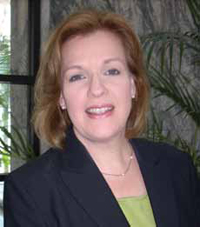 Property owners blessed with the beauty of the Carolina coast also are cursed by the threat of the real possibility of serious wind damage. Their plight is especially uncertain during the hurricane season, June 1 through Nov. 30, when they must watch and wait as potentially devastating storms roll across the Atlantic Ocean, eventually dissipating, turning north before touching the U.S. East Coast, making landfall elsewhere or – the worst possible scenario for Carolina residents – wreaking havoc from Hilton Head to Nags Head and places in between.
Property owners blessed with the beauty of the Carolina coast also are cursed by the threat of the real possibility of serious wind damage. Their plight is especially uncertain during the hurricane season, June 1 through Nov. 30, when they must watch and wait as potentially devastating storms roll across the Atlantic Ocean, eventually dissipating, turning north before touching the U.S. East Coast, making landfall elsewhere or – the worst possible scenario for Carolina residents – wreaking havoc from Hilton Head to Nags Head and places in between.
Heavy winds can be ruinous damaging roofing, windows and more. Further south, Hurricane Andrew hit Florida in 1992 as a category 4 storm, causing more than $25 billion in damage and changing the way homeowners’ insurance premiums were written. Policies were dropped or changed and many residents faced higher premiums. Years later, in 2005, Hurricane Katrina brought destruction to the Gulf Coast and forced insurance companies to again reassess their exposure to financial disaster.
Hurricanes can be accompanied by tornadoes, which, of course, add to the risk of wind damage. For example, in September 1967, Hurricane Beulah plodded through Texas, joined by more than 140 deadly twisters. Even the most experienced meteorologists are unable to predict when a tornado will form, which direction it will choose to travel and where it will descend from the sky.
In South Carolina, where the legend of Hurricane Hugo, a massive 1989 storm, continues to grow, lawmakers stepped in to help out by passing the Omnibus Coastal Property Insurance Reform Act of 2007. One of the bill’s most important provisions established the South Carolina Hurricane Damage Mitigation Program – also known as SC Safe Home – which offers grants for residents to fortify their homes against the damaging effects of high winds from hurricanes and other severe storms. It also provides discounts or credits on insurance policies for retrofitted homes.
“We are presently the only grant program like this in the United States,” said Ann Roberson, director of SC Safe Home. “Other states with coastal exposure, such as Alabama and Mississippi, are working to implement programs like SC Safe Home. It is a great opportunity for homeowners.”
SC Safe Home, which operates within the South Carolina Department of Insurance, provides funds to individual homeowners to make their property more resistant to hurricane and wind damage. The program does not reimburse homeowners for work that has already been done.

“Our program was created as an incentive for homeowners to be motivated in retrofitting their homes,” said Roberson. “We also wanted to make the South Carolina property insurance market more attractive to insurance companies and make properties more secure and sustainable.”
Prior to applying for grants of up to $5,000, homeowners must have their residence inspected by a qualified home inspector, with the charge for this service capped at $150.
“Our inspections usually take about an hour-and-a-half because we want to help our customers find the answers they need,” said Dan Bowden, co-owner of Compass Designs, which serves Horry, Marion and Georgetown counties in South Carolina. “We don’t leave until everything is completed on the application. That way the homeowner can mail the application that day.”
It typically takes three to six months to approve the application, but, for most homeowners, the end result is well worth the wait.
“Many homeowners are becoming motivated to retrofit their homes, not only because of the potential grants but because of the tremendous insurance savings,” said Jeff Donaldson, president of ACE Preferred Inspections, which has offices in Charleston and Beaufort. “The savings are retroactive for up to three years, and it stays with the home so a new owner will still benefit.”
Since December 2010, the SC Safe Home program has awarded 1,429 grants totaling approximately $6.1 million.
“The South Carolina Wind and Hail Underwriting Association helps fund us,” Roberson said. “The program works well, and we anticipate it to continue for years to come. SC Safe Home is such a positive program, and we have had satisfying feedback from homeowners.”
SC Safe Home also is financially supported by a portion of the tax collected on wind and hail insurance policies.
To learn more about SC Safe Home, visit http://scsafehome.sc.gov.